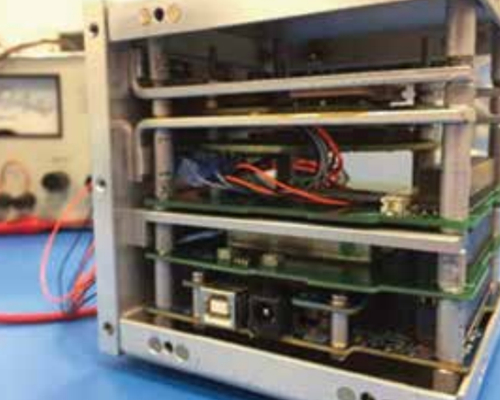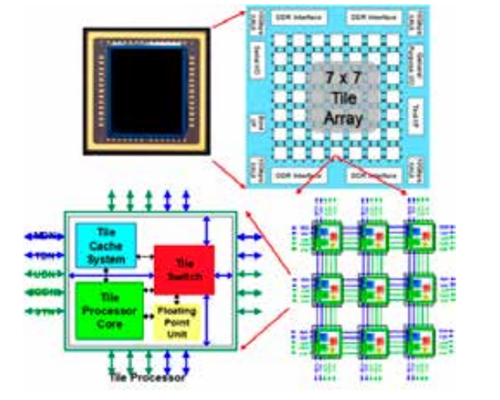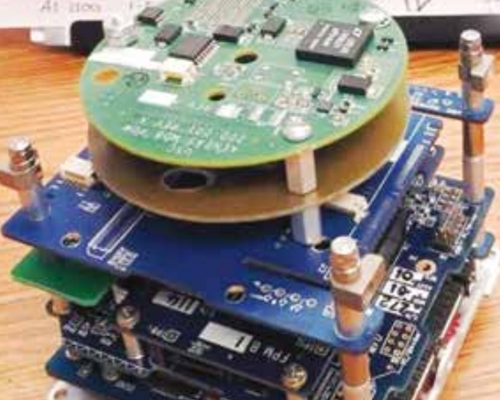Maestro Flight Experiment (MFE)
This project is in conjunction with the Information Science Institutes (ISI) Computational Sciences and Technology Division. The experiment itself is hosted by a DARPA Project through the NovaWurks eXCITe platform with launch expected to take place in mid 2018. The MFE executes diagnostics, performs image processing activities, addresses strategies for dealing with thermal and power constraints in orbit, and assesses the sensitivity of the processor to radiation exposure in low earth orbit. The MFE demonstrates a substantial advance in radiation hardened on-orbit computational performance, which is needed to handle the ever-increasing data load of modern imaging sensors and other orbital sensor systems. The MFE is based on a Pumpkin, Inc, motherboard and PIC24 processor board. Additional boards host the Maestro ITC processor, its off-chip RAM and flash memory resources, DC-to-DC converters, and other circuitry. The boards are contained in a 1U housing that attaches to the primary spacecraft. Internal aluminum panels provide a thermal path between the MFE's major heat sources (e.g., the Maestro ITC processor and the DC-to-DC converters) and the interface to the satellite.


